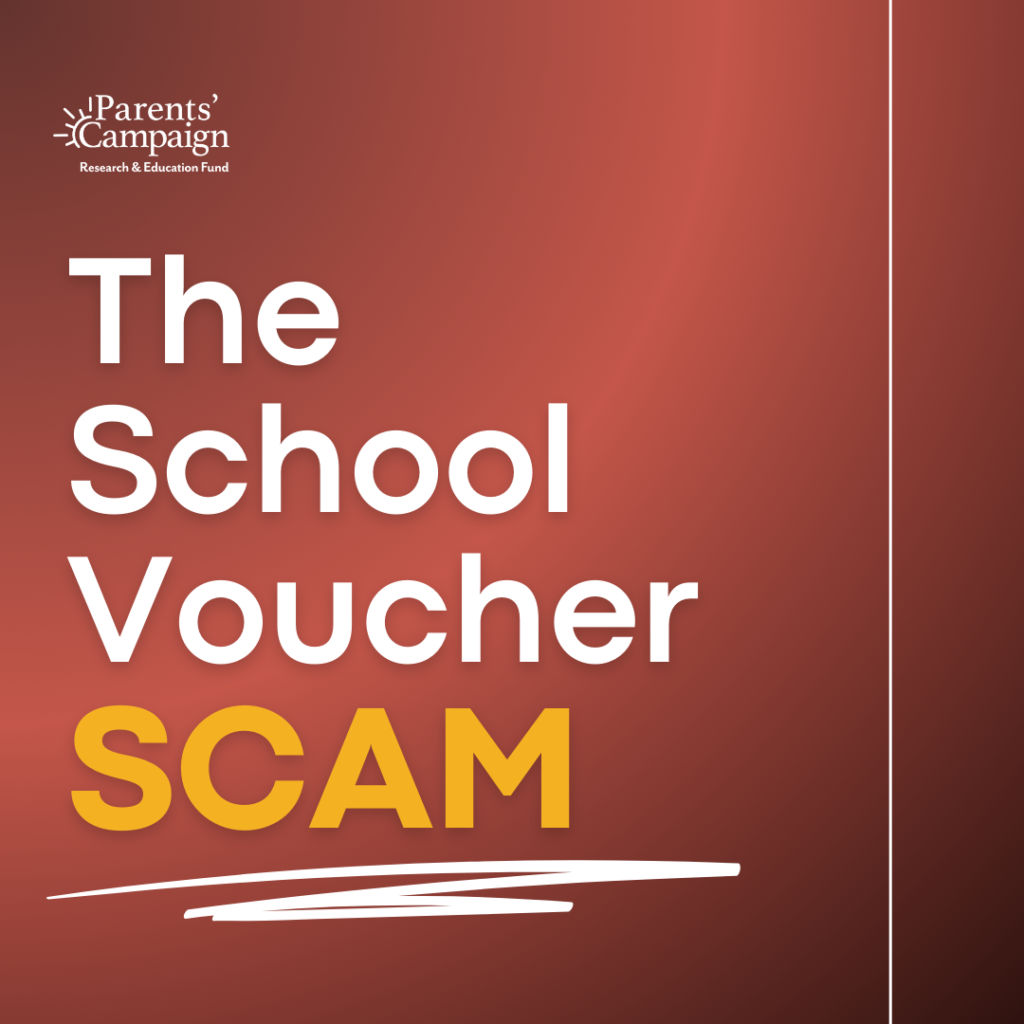Online & For-profit Schools
Performance of Online Schools
Comprehensive research has concluded that virtual (online) schools produce significantly worse academic results than brick and mortar public schools. Online schools are run by for-profit businesses that take state funding, cut costs to ensure greater profits, and move students backward academically.
- A 2019 National Education Policy Center study recommended that states “slow or stop” enrollment in online-only or virtual schools, “given the overwhelming evidence of poor performance by full-time virtual and blended schools.” They found further that full-time online schools perform significantly worse than blended schools. Study: https://nepc.colorado.edu/publication/virtual-schools-annual-2019
- A 2017 RAND Corporation/New York University study found that students with low test scores who enroll in online-only schools tend to fall even further behind. Study: https://journals.sagepub.com/doi/full/10.3102/0013189X17692999
- A 2015 Stanford University CREDO study of taxpayer-funded, full-time virtual schools nationwide found that students lose 180 days of learning in math (as if they did not attend school at all for a year) and 72 fewer days, or half a year, in reading as compared to their traditional public school peers. Study: http://www.tpcref.org/wp-content/uploads/CREDO_Virtual_Charters_Study_2015.pdf
Based on these dismal results, the Walton Family Foundation, one of the earliest and strongest proponents of school choice in the U.S., released an official statement in January 2016 acknowledging the failure of virtual schools.
This (CREDO Study) is stark evidence that most online charters have a negative impact on students' academic achievement. The results are particularly significant because of the reach and scope of online charters: They currently enroll some 200,000 children in 200 schools operating across 26 states. If virtual charters were grouped together and ranked as a single school district, it would be the ninth-largest in the country and among the worst-performing. Funders, educators, policymakers, and parents cannot in good conscience ignore the fact that students are falling a full year behind their peers in math and nearly half a school year in reading, annually. For operators and authorizers of these schools to do nothing would constitute nothing short of educational malpractice.
The fact that this disastrous corporate experiment with public school children’s lives was allowed to continue and grow for more than a decade casts doubt on the work of school choice proponents who annually lobby for state funding of other unproven strategies for privatizing public education. Even now, while condemning the online schools’ disservice to students, the Walton Family Foundation curiously declined to withhold support from current or future virtual schools; they did, however, commit to asking tougher questions next time.
There is practically no accountability for full-time online schools. Because all schoolwork is done online, virtual teachers have no idea whether students are doing the work or whether parents or tutors are actually completing the exercises to inflate grades. Test scores are abysmal and here’s the real rub: it is impossible to verify average daily attendance – the measure that drives funding to schools. The virtual school simply sends a bill, and the state or local school district has to fork over the state and local funding for the number of students the virtual claims to have enrolled. There is no way to count heads or determine whether or not students are actually attending. It is akin to turning on a funding spigot and allowing out-of-state for-profit businesses to rake in hordes of state funding – all while diminishing student achievement.
One of the earliest states to experiment with virtual schools, Pennsylvania paid virtual school companies $10,000 per student only to find that 100% of the cyber schools had “significantly worse” outcomes than their traditional public school counterparts. The performance of these schools has not improved over time.
For-profit Schools
There is a fundamental conflict of interest inherent in the for-profit agenda: are the for-profits more concerned about their stockholders or the education of children?
As states have opened the door for investors to gain access to tax dollars through for-profit schools, an entire industry has developed. It is now booming, with private equity groups holding conferences to recruit hedge fund managers and others to invest in for-profit education opportunities, teaching them how to profit from state education dollars. (Click here to read about other efforts to privatize public schools.)
Lobbyist influence
For-profit schools have become such a money-maker that their operators pay handsomely to influence education legislation to benefit their bottom line. Lobbyists (including those operating in Mississippi) aggressively push their agenda, donating to political campaigns through PACs that aren’t required to reveal their funders, running multi-million dollar ad campaigns to influence public opinion, and funding foundations that push their for-profit agenda.
K-12, Inc. is the largest of several for-profit virtual school companies that are profiting from state tax dollars, despite an abysmal record of student achievement.


